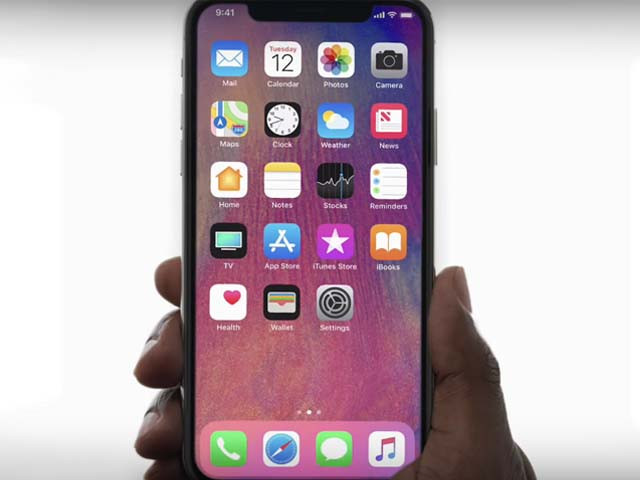With cricket coming home and Apple’s annual event on the same day, September 12, 2017 proved to be quite happening.
But since I am a techie more than a cricket/football fan, it was perhaps the Apple event that got me more excited. The main reason behind my anticipation was to see whether the rumours about the new Apple iPhone X would turn out to be true or not and what other changes can we expect to see in the phone.
Most of the show went on with little or no surprises. Considering it is Apple we are talking about, only something jaw-dropping would impress people and mere upgrades just won’t cut it.
Newer, faster and better processor: check
Newer, faster and better camera: check
Longer battery life: check
New Apple watch and new iOS etc: check
Soon after the introduction of iPhone 8 and iPhone 8 Plus, we were introduced to iPhone X, the $999 phone which will officially be released on November 3, 2017.
Let’s take a look at the new iPhone X’s most interesting areas which make it a landmark product and must-buy:
Augmented reality:
Apple didn’t exactly invent augmented reality (AR), but they will surely be the first ones to reach audiences on a massive scale (715 million). Their new operating system, the iOS 11, will support AR on all iPhones launched since 2013.
Some businesses have immediately taken to it; a few to name would be Ikea place and Cambria. Imagine being able to feel how it is to sit in a Ferrari (virtually) or a rocket while it is launched, just by the mere movement of our hands.
Video games are a huge business, whether you play them on a PC, console or even on a mobile phone. However, we haven’t seen any mainstream change in the way we interact with games for a while now.
From touch-based, joystick, joypad, keyboard, mouse and screen touches to Nintendo Wii controllers which demanded motion, AR is surely the next big thing ahead of virtual reality (VR), but more on that later.
We already spend a lot of time on our phones and for those who play a lot of games, AR can provide a much detailed and complete experience, especially for strategy games (with their bird’s eye view) and the first-person or third-person genre of games.
In a contemporary war zone game, to kill enemies upfront and dealing with aerial threats from the top, one normally has to swipe/scroll up and down to address the enemies. Your thumbs get a good exercise while you continue to stare at the screen without doing anything else.
However, with AR, you would have to raise your phone in the direction you desire and address the virtual danger, which will not only make the experience more realistic, but also exercise your arms and wrists as you proceed.
VR is an alternative area which is exciting and promises to provide a richer experience for the gamer. But having tried VR headsets, I don’t see a mass market for them because you can’t carry them everywhere (in the bus, to work or at the dinner table) due to their bulkiness. Another weakness of the VR headsets is that the user cannot see their surroundings at all.
Face ID:
For me, the biggest news of the event was the introduction of face ID, not because you can unlock your phone using your face, but because it is a window into the life of a consumer. This will be of particular interest to advertisers such as Facebook and Google, who generate a big chunk of money through ads, and not just any ads, targeted ads.
They do this accurately after analysing our online behaviour, which includes our likes, comments, posts, pictures, our browsing history and the time we spend on a particular type of content etc. Due to the use of complex algorithms, they can accurately classify a person and then serve them content and ads which appeal to them.
No matter how smart these algorithms are, they are still unable to record the effect which a particular content might have on a person. Does the person feel happy, sad or angry? The results of the current algorithms are entirely dependent upon the time spent on content, frequency of interactions with similar content and interest in the content by family, friends etc. Thus, there is a dire need for a more accurate metric for customer feedback.
And then steps in the iPhone X and face ID, which solves the missing piece of real-time and accurate customer feedback which is displayed through the emotions exhibited on the face of the user.
This will prove to be valuable data for the advertisers. Why? Because they can then launch pilots which will receive high accuracy feedback and will be able to segment and categorise it based on real life and gather undisputed data right from the customer.
Comparing a person’s face (without them knowing) at different times and against a different set of content has the potential to give an incredibly accurate feeling-o-meter.
Apart from the two aforementioned features, the new iPhone X comes with two cameras, edge-to-edge screen, wireless charging, portrait lighting and animated emojis. It boasts of having the most durable glass and the most powerful and smartest chip ever used in a smartphone. In order to change the way it looks, they have also omitted the only iconic button on the phone, the home button.
Apple may not be the first one to introduce these features (Samsung already had Face ID before Apple), but since they will make it mainstream, this will change the way advertising and the gaming industries work in a major way.
I do not know if everyone is as excited as I am about the iPhone X, but I know I cannot wait to get my hands on it.
Will iPhone X benefit advertising and gaming industries more than its consumers?
Face ID will benefit advertisers such as Facebook and Google, who generate a big chunk of money through targeted ads.

Their new operating system, the iOS 11, will support AR on all iPhones launched since 2013. PHOTO: SCREENSHOT


COMMENTS
Comments are moderated and generally will be posted if they are on-topic and not abusive.
For more information, please see our Comments FAQ